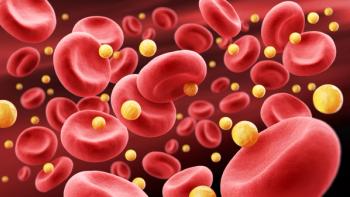
New Tool Developed to Track How Breast Cancer Grows
New system combines computational and experimental techniques to map evolutionary cancer lineages in their natural habitat of human tissue.
A new tool developed by researchers at the Wellcome Sanger Institute is able to track the growth of breast cancer in detail not previously available, which highlights how cells around the tumor may be the vital in controlling spread of the disease.
Additionally, the new tool is able to trace which populations of breast cancer cells are responsible for spreading the disease, and highlights how cancer cells location may be as important as mutations in tumor growth.
The technology was developed by teams from the Wellcome Sanger Institute, EMBL’s European Bioinformatics Institute (EMBL-EBI), the German Cancer Research Center (Deutsches Krebsforschungszentrum, DKFZ), the Science for Life Laboratory in Sweden, as well as additonal collaborators.
“We have created a system that combines computational and experimental techniques that allows us to map evolutionary cancer lineages in their natural habitat of human tissue,” first author Artem Lomakin, from EMBL-EBI and the German Cancer Research Center (Deutsches Krebsforschungszentrum, DKFZ), said in a press release. “While it has been previously possible to trace the lineage of cancer tumor cells in an experimental setup, this is the first time that multiple lineages were traced in human tissues, giving a complete overview of breast cancer development in the body. Insights generated by our system were impossible to get before, especially at this scale.”
The tool may help address some of the most significant questions in treating cancer, such as why some cancer cells spread, how treatment resistance is formed, and why some therapies fail. This development may be used in the future to determine how certain treatments influence cancer at the genetic level and its impact on how the tumor interacts with the immune system and the surrounding environment.
Breast cancer occurs when cells start to grow uncontrollably caused by cell mutations. The tumor eventually becomes a patchwork of cells with different mutations that are genetically different and may have different reactions to treatments.
The subsequent mutations are influenced by what is happening around the cancer, the cells it is surrounded by, and the individual’s immune system.
The newly developed tool uses hundreds of thousands of tiny fluorescent molecular probes to interrogate cellular DNA and RNA and can scan large pieces of tissue with fluorescence microscopy. This allows researchers to can genetically and physically map the unique set of cancer cell clones, how gene expression programs change, and illustrate how they interact with their environment.
The researchers found specific and often unexpected patterns of clone growth across multiple stages of breast cancer development. They also found that genetic clones behave differently depending on where they started in the breast. The results findings also suggest that it is not always just genetics that influence how cancer cells grow, but this is also influenced the location of the tumors.
Future research may lead to the development of therapies that could prevent or reduce the ability of cancer cells to grow and spread by influencing the environment around the tumor, according to the investigators. They added that the tool may be able to test how new treatments impact both the cancer and its interaction with the immune system, which would provide a total picture of how therapies work and any possible adverse effects.
“Cancer is caused by genetic mutations in a cell and this research was the first time that we were able to use DNA base specific probes to target dozens of these mutations in a set of cancer cell clones,” said professor Mats Nilsson, co-senior author from the Science for Life Laboratory at Stockholm University, in a press release. "This innovative technique allowed us to accurately reconstruct the spread of these clones. An important insight from our research is that it may not be the genetic changes alone that are the reason that the cancer cells survive and spread; it could also be where they are. This adds an additional layer of complexity as well as new potential ways to target the disease. It may also offer explanations about why some treatments only work in some individuals, even if they have similar mutations to others, as the tumors are found in different areas of the breast.”
REFERENCE
Breast cancer spread uncovered by new molecular microscopy. Wellcome Sanger Institute. November 9, 2022. Accessed November 10, 2022.
Newsletter
Stay informed on drug updates, treatment guidelines, and pharmacy practice trends—subscribe to Pharmacy Times for weekly clinical insights.


















































































































































































































